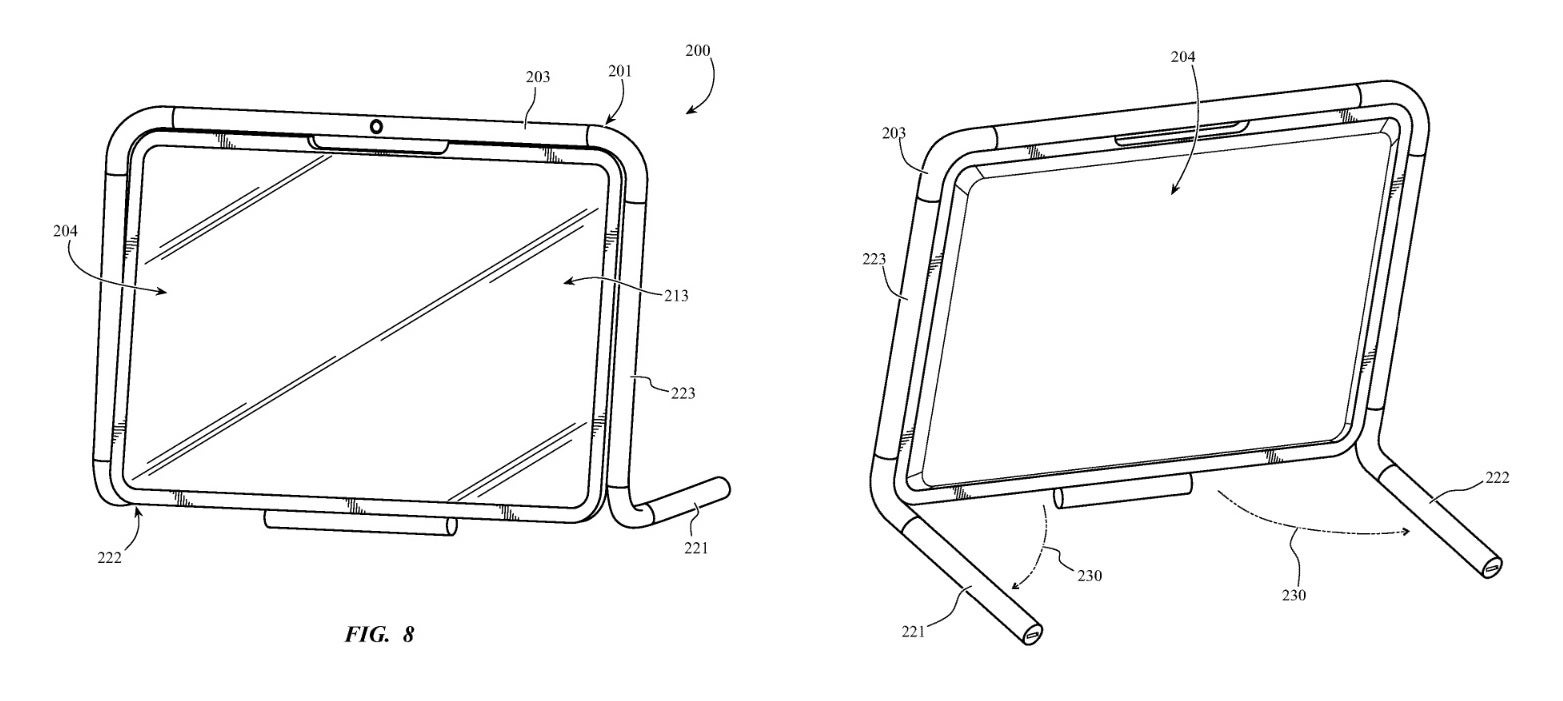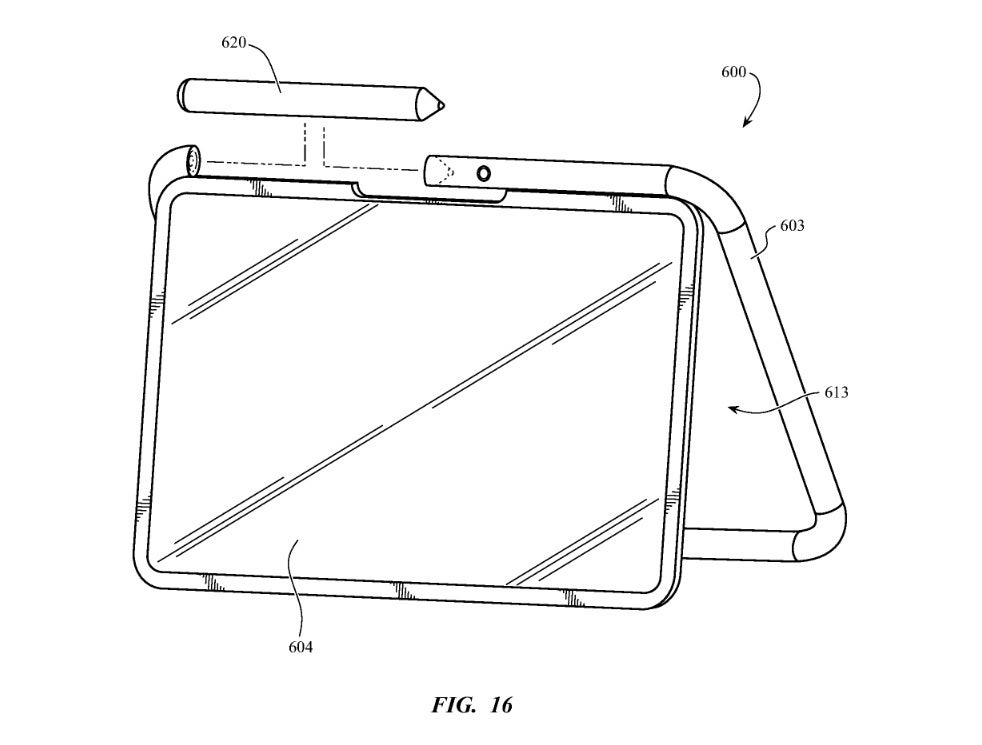Apple is awarded a patent for a new case that could lead to thinner iPad tablets

Apple has been granted a patent for a new case design for the iPad. Called "Peripheral Housing for a Computing Device, " the patent is number US 11,698,663 and is dated July 11, 2023. The patent was awarded to Apple by the U.S. Patent and Trademark Office (via AppleInsider). The case is called peripheral housing and is unique in that just one edge of an iPad would attach itself to it.
Depending on how the unattached part of the peripheral housing is positioned, it could be used to prop up an iPad on a table to provide a better viewing angle for watching videos on the device. The peripheral housing can also be manipulated to create legs at the back of the device allowing an iPad to stand up on a table without a tilt. And the peripheral housing can also hold components like batteries and cameras inside it along with accessories. As a result, Apple might design future iPhone and iPad units specifically to work with the case described in the patent.

The Peripheral Housing case can be manipulated to create feet for an iPad so it can stand on a table without a tilt
If Apple does go ahead and creates this case, it could result in thinner devices as the battery and some camera components could be housed inside the peripheral housing. The patent notes that this is possible thanks to recent advances that allow for the miniaturization of components such as processors, batteries, memory, integrated circuits, and more.

The patent shows an Apple Pencil being housed in the case
Apple applies for and receives many patents each year and most of them never see the light of day. Of course, you normally hear about the ones that become a huge hit and never hear a peep about the patents never used. And just because Apple has been awarded a patent for this case, it doesn't mean that the company is forced to use it.
While this seems like an interesting idea, we can't imagine Apple revising the design of the iPad in order to work with the case even if it means that the devices can be made thinner by moving the battery and other components inside the peripheral housing from the devices themselves.










Things that are NOT allowed: